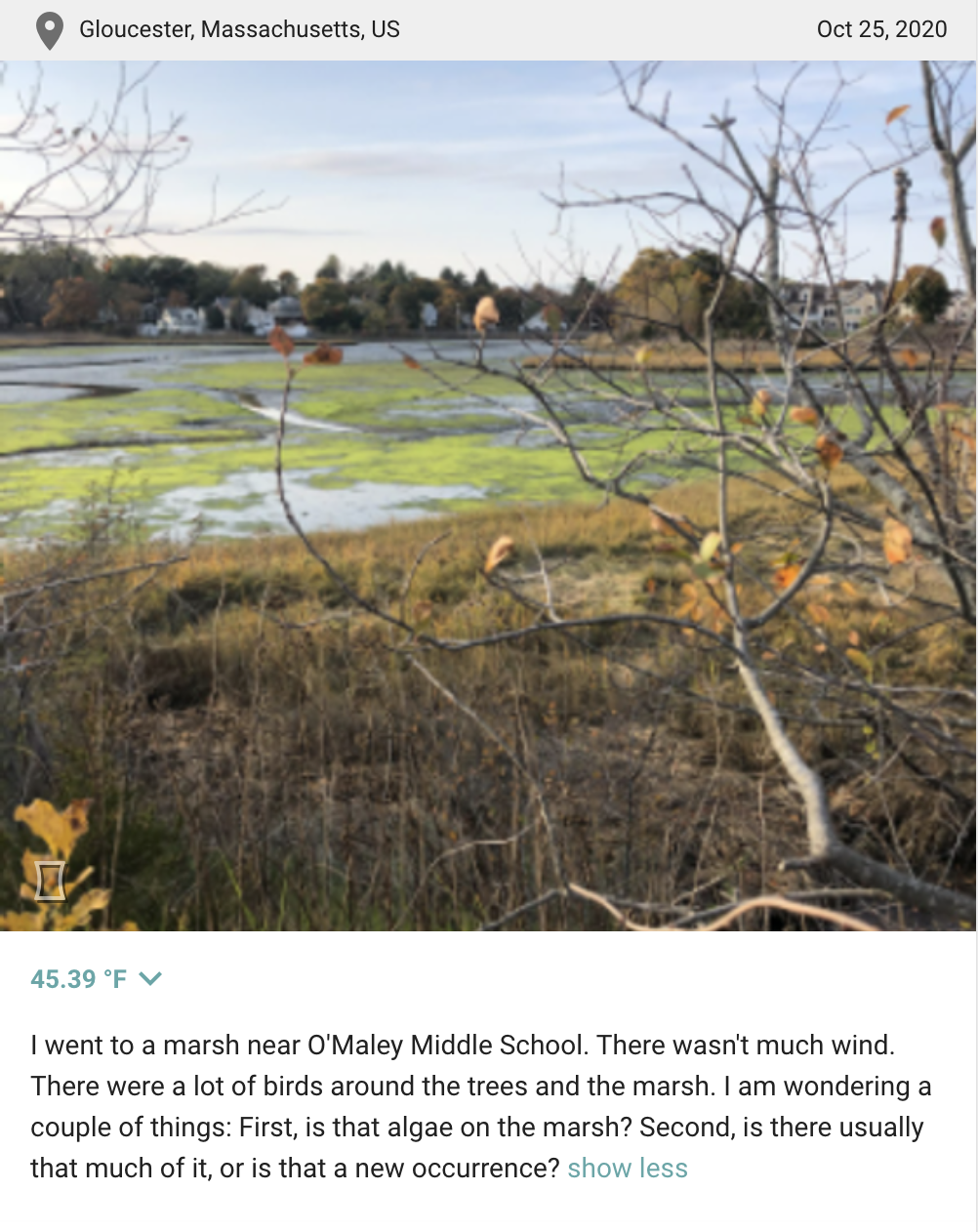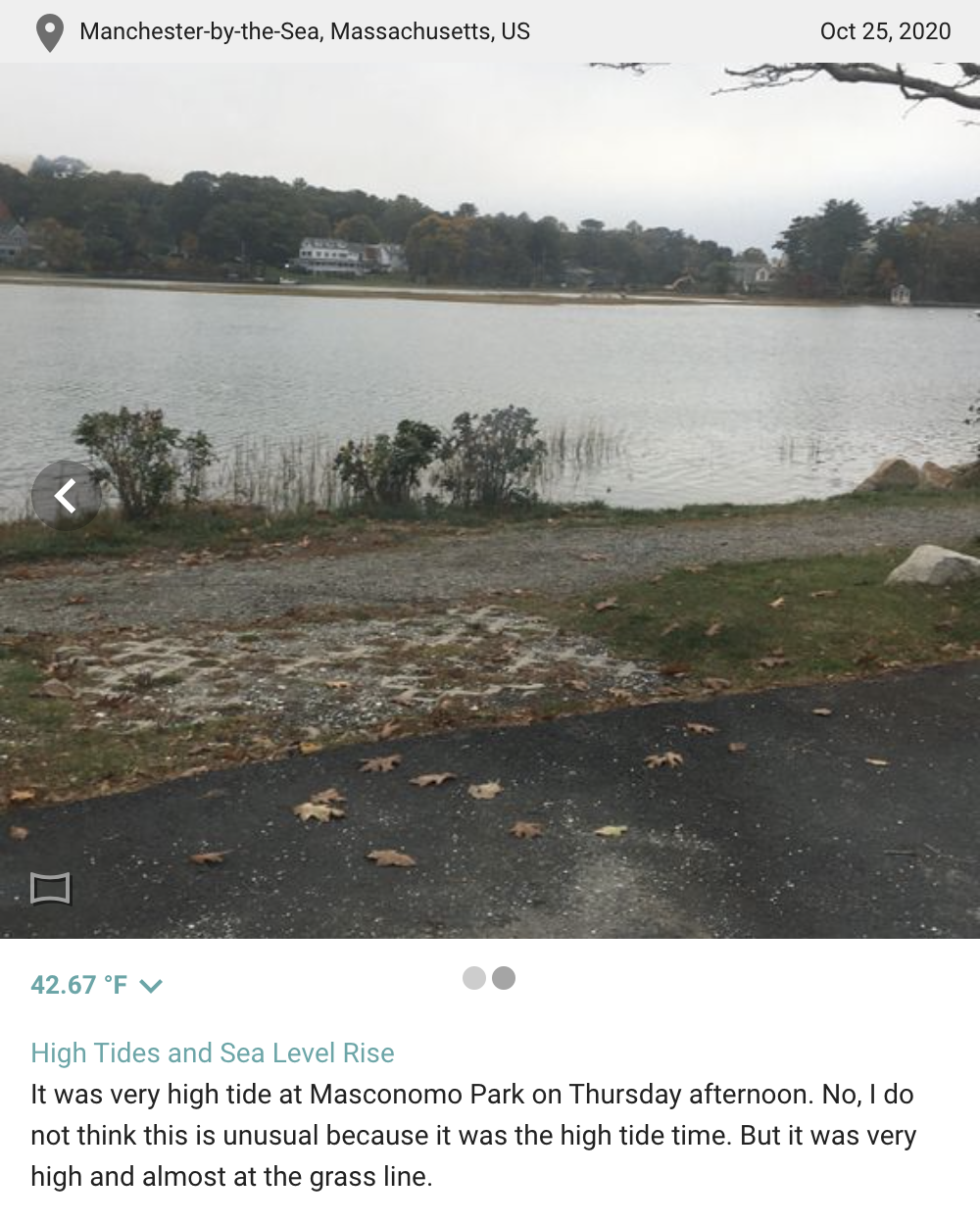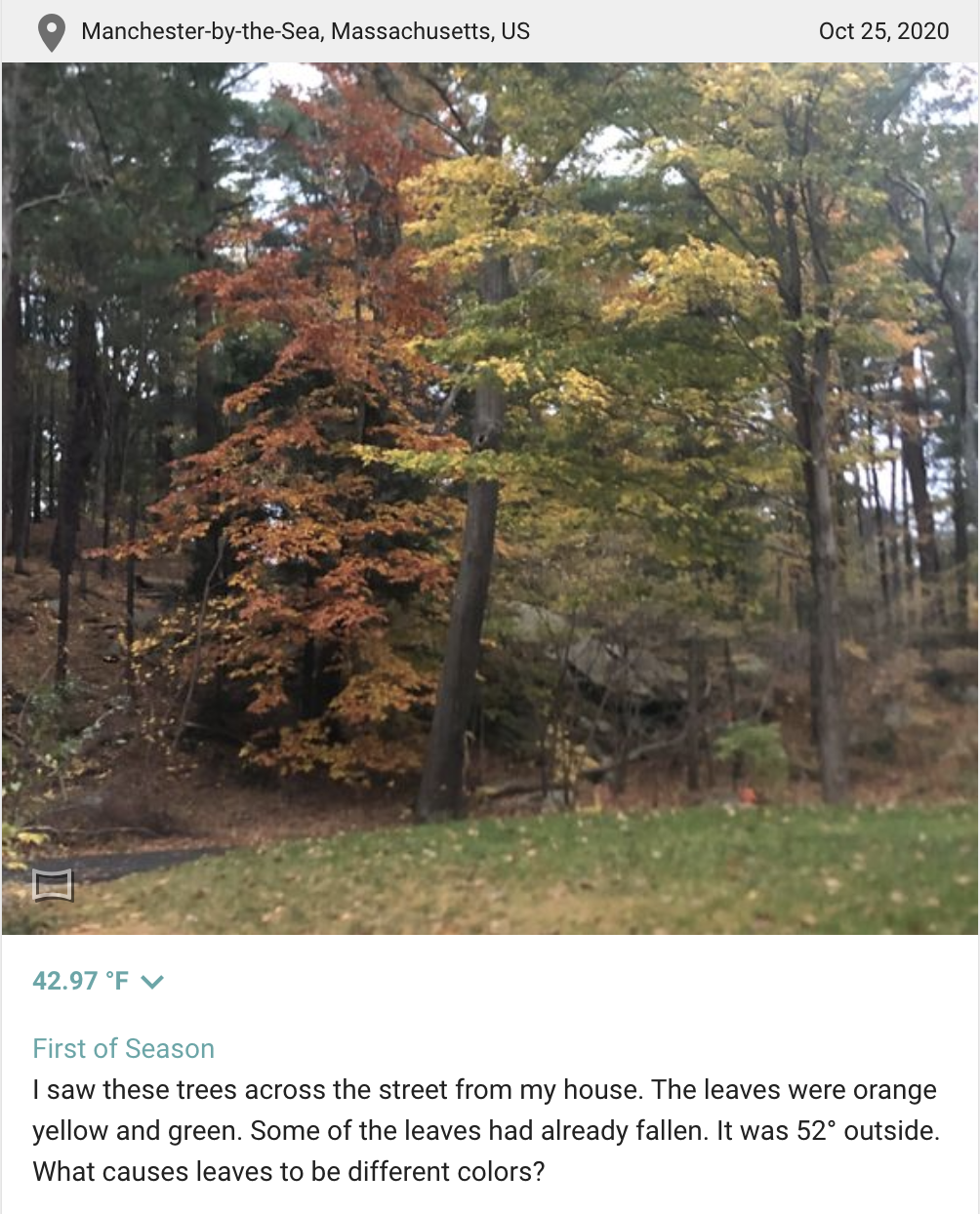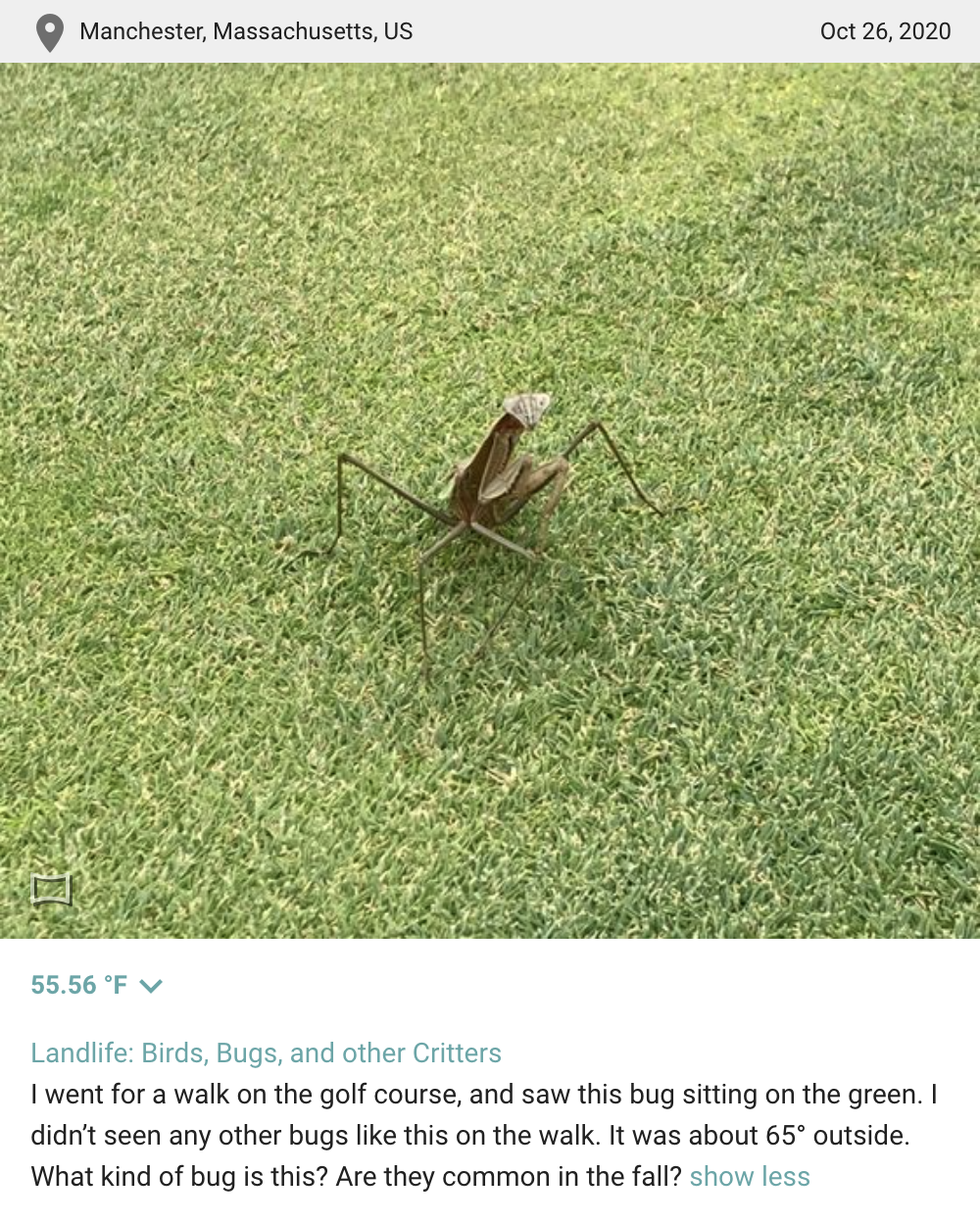Using Citizen Science to Enact Change
How community science projects call students to action
More and more, we are witnessing the power of young people across the globe who are fighting for and enacting positive change. From Greta Thunberg’s Climate Strike and Malala Yousafzai’s fight for women’s education, to the Parkland shooting victims fight for gun control, it’s clear that given the tools, skills, and empowerment to act, young people are more than capable of not only enacting change but helping to solve global problems.
Citizen science is the practice of amateur scientists - everyday people - collecting, analyzing, and sharing scientific data with professional scientists to help solve problems that impact our everyday lives. Whether it’s protecting endangered species, safeguarding water resources, preventing disease, or accelerating medical research, we want GUS students to understand the breadth of any issue we explore, from both a scientific perspective and a societal perspective, and to be able to problem-solve and brainstorm solutions.
We often use design thinking as a tool for approaching citizen science projects. Design thinking is a simple and effective approach for scientific exploration that is rooted in exploring science with empathy. Using this method we begin each project with the assumption that our work can be helpful, and if at the end of the day we are unsuccessful in our pursuits, we have at least gained some valuable perspective using empathetic problem solving to approach our critical thinking. We start many of our brainstorming sessions with a “How Might We?” question:
How: implies that there is a solution
Might: allows us to try, and succeed or fail
We: reiterates that we are part of a global community, and on the same team
A vital component of citizen science projects is accurate data collection. Since the data collected is cataloged and analyzed by professionals, learning and practicing important scientific skills and concepts - like tree species and wildlife sign identification, or using tools like a DBH tape to measure the tree diameter - is imperative. When students feel they are contributing to an actual scientific study, practicing and putting these skills and concepts to use becomes so much more meaningful. Clear communication of information is also an important component of science, and these types of projects lend themselves well to this.
Asking questions, exploring ideas, and acting responsibly in the community and in the world are core tenets of the GUS mission, and also key to any citizen science project. Approaching scientific inquiry through the empathetic lens of citizen science allows students to engage in projects that are centered on making the world a better place; and this work reminds us that even small actions can help enact change on a global scale.
Citizen Science in Action at GUS
Harvard Forest Schoolyard Ecology Project
Goal: Various projects, including researching how forests change and grow over time, and tracking the destruction of the invasive pest, the Wooly Adelgid.
Grades: 7
Description: GUS has been a part of the Harvard Forest Schoolyard Ecology Project for 6 years. This fall, students learned to identify the Hemlock Wooly Adelgid, an invasive pest that is killing Eastern Hemlock throughout New England, and located the eggs of this pest in one of our plots on the nature trail. Many reported having seen it in their own yards and other places locally and on campus. It is a science teacher’s dream to watch their students apply what they have learned in other settings, and this project has inspired them to do just that. We are currently preparing this information for sharing with Harvard Forest scientists, as well as with the broader GUS community.
The Great Sunflower Project
Goal: An ongoing assessment of the state of North America's insect pollinators
Grades: 7
Description: The Great Sunflower Project is a project that was started to gain information about urban, suburban, and rural bee populations. GUS students participated in the project for the first time this fall. From the wetland boardwalk, students observed purple loosestrife and jewelweed, recording each visit a pollinator made to these flowers, for five minutes. Seventh graders recorded seeing bumblebees, carpenter bees, honeybees, and hoverflies. We amassed a great data set, that was submitted via the project’s website, which gave us practice using spreadsheets to calculate the mean of each species and graph the data.
Project Feederwatch
Goal: To monitor the population health of the birds of North America
Grades: 2 + 7
Description: Project Feederwatch, run by the Cornell Lab of Ornithology, is a “survey of birds that visit backyards, nature centers, community areas, and other locales in North America.” Anyone in North America can participate! The data collected gives scientists an idea of what birds are present in certain areas, and which are not, and helps them to see if certain bird populations are in decline. GUS students have been collecting data for this project for two years. Each week during the winter months, students observe a feeder set up outside the classroom and count the number and species of birds that visit. This year, we hope to use the newly launched Project Feederwatch app. Data collected recently helped scientists determine that the range of the Northern Cardinal is expanding!
ISeeChange
Goal: To chart the impacts of environmental or climate-related change
Grades: 8
Description: Data is collected on a variety of environmental and climate-related changes - even seemingly small seasonal changes are worthy of note as they may be indicative of changes season to season or year to year. This data is shared via the ISeeChange website and smartphone app, which makes it easy to record real-time data and see posts by other students, teachers, and community members across the country. The app records immediate weather data and asks posters if they deem their post to be part of a normal or an unusual circumstance. Students also posted their observations to their own online portfolios using Google Sites. At a minimum, this project forces students to pause, look around, and determine if what they are seeing is normal and expected - or strange and unusual and a cause for concern.
Engineering: Watershed Pollution
Goal: To monitor river dumping, both legal and illegal, into the Merrimack and Ipswich Rivers, and to understand what implications that dumping has on local populations.
Grades: 6
Description: Students have been exploring human-created issues in the Ipswich and Merrimac River watersheds. An exploration of engineering and the ways in which engineers help enrich the lives of other people through their work, in addition to monitoring the dumping, students are working to devise solutions by creating fictitious businesses aimed at helping to repair these local watersheds.













